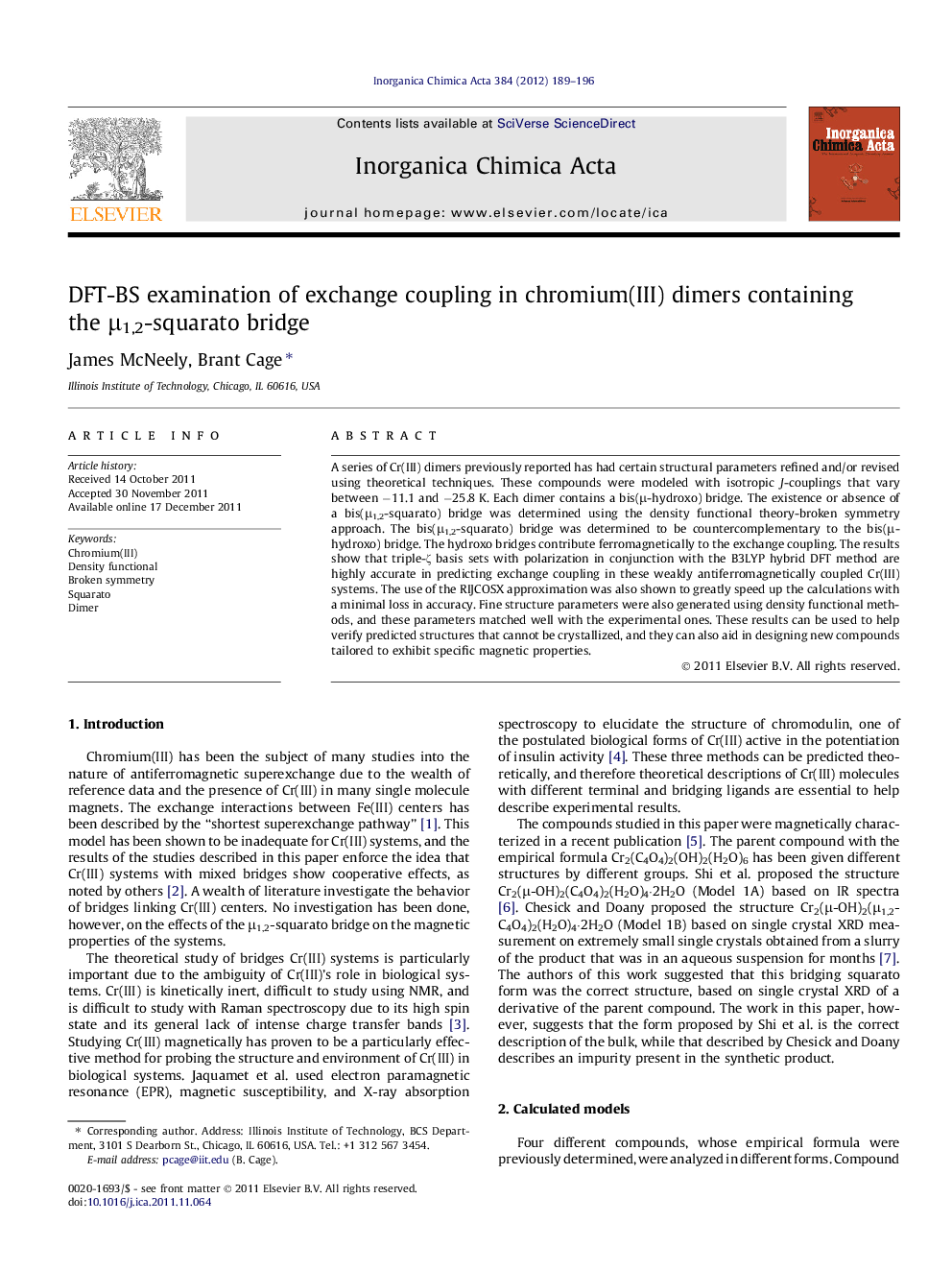| کد مقاله | کد نشریه | سال انتشار | مقاله انگلیسی | نسخه تمام متن |
|---|---|---|---|---|
| 1308637 | 1499203 | 2012 | 8 صفحه PDF | دانلود رایگان |

A series of Cr(III) dimers previously reported has had certain structural parameters refined and/or revised using theoretical techniques. These compounds were modeled with isotropic J-couplings that vary between −11.1 and −25.8 K. Each dimer contains a bis(μ-hydroxo) bridge. The existence or absence of a bis(μ1,2-squarato) bridge was determined using the density functional theory-broken symmetry approach. The bis(μ1,2-squarato) bridge was determined to be countercomplementary to the bis(μ-hydroxo) bridge. The hydroxo bridges contribute ferromagnetically to the exchange coupling. The results show that triple-ζ basis sets with polarization in conjunction with the B3LYP hybrid DFT method are highly accurate in predicting exchange coupling in these weakly antiferromagnetically coupled Cr(III) systems. The use of the RIJCOSX approximation was also shown to greatly speed up the calculations with a minimal loss in accuracy. Fine structure parameters were also generated using density functional methods, and these parameters matched well with the experimental ones. These results can be used to help verify predicted structures that cannot be crystallized, and they can also aid in designing new compounds tailored to exhibit specific magnetic properties.
Dynamical models used to probe the dependence of the exchange coupling on the geometries of the superexchange pathways. The lines in the figure are guides for the eyes only. The results show that the two bridging pathways are countercomplementary.Figure optionsDownload as PowerPoint slideHighlights
► The structure of several Cr(III) dimers was clarified using the DFT-BS approach.
► The influence of different bridges on the exchange coupling was studied.
► The bridges were shown to be countercomplementary.
► Population analysis shows the μ1,2-C4O4 bridge playing major role in the coupling.
Journal: Inorganica Chimica Acta - Volume 384, 1 April 2012, Pages 189–196